
What are these capsids transporting? Which cells release them?? Where do they go???👾🧑🚀
So, stay tuned: even in the tiny fly brain, these mechanisms might reveal how similar processes operate in our own. 🧠✨

What are these capsids transporting? Which cells release them?? Where do they go???👾🧑🚀
So, stay tuned: even in the tiny fly brain, these mechanisms might reveal how similar processes operate in our own. 🧠✨
www.cell.com/current-biol...
🧶 Full thread on our discoveries here: bsky.app/profile/thec...
www.cell.com/current-biol...
🧶 Full thread on our discoveries here: bsky.app/profile/thec...
www.biorxiv.org/content/10.1...

www.biorxiv.org/content/10.1...
But how do hosts trap transposon sequences in genomic loci that help establish a piRNA response?
Looking at a natural transposon invasion, Baptiste Rafanel and Kirsten Senti made some remarkable observations.
But how do hosts trap transposon sequences in genomic loci that help establish a piRNA response?
Looking at a natural transposon invasion, Baptiste Rafanel and Kirsten Senti made some remarkable observations.

In this work, we link antiviral immunity in bacteria and humans by showing that homologs of human Schlafen nucleases protect bacteria from phages.
www.biorxiv.org/content/10.1...

In this work, we link antiviral immunity in bacteria and humans by showing that homologs of human Schlafen nucleases protect bacteria from phages.
www.biorxiv.org/content/10.1...
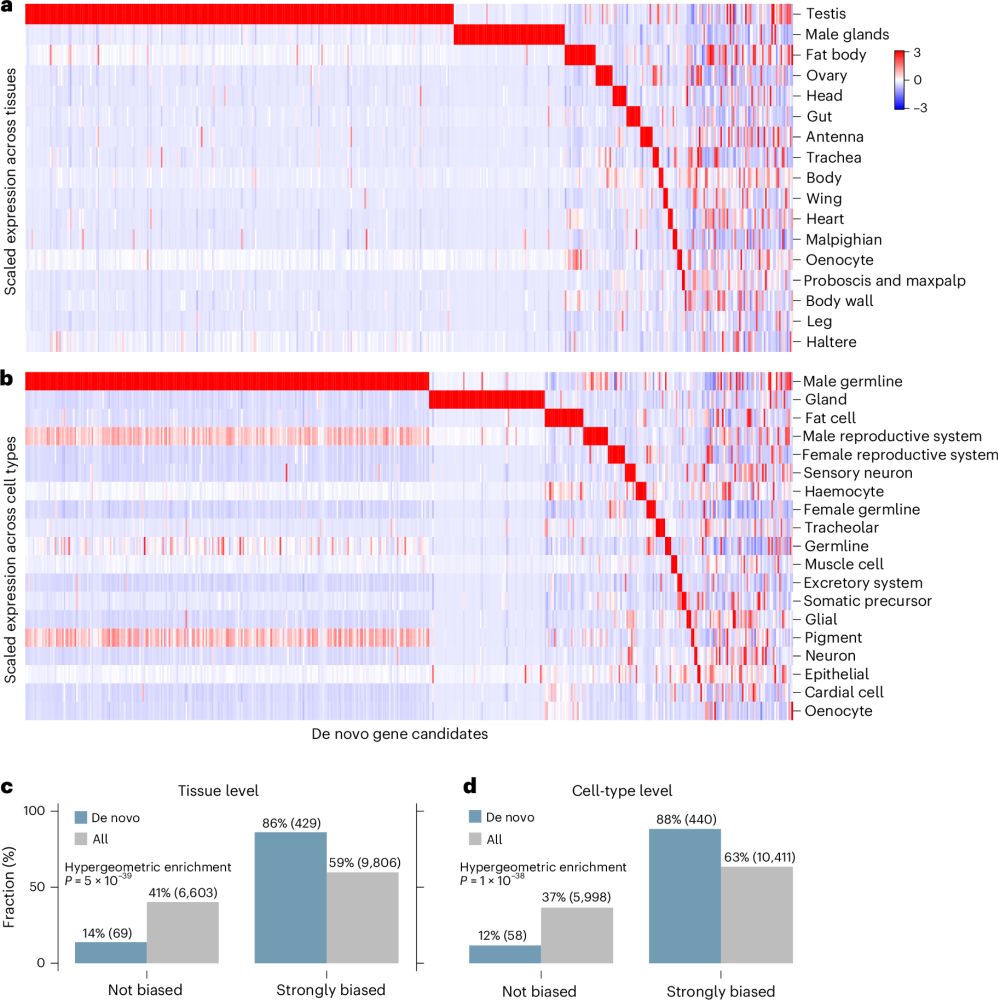
Calling all transposon fans & lovers of genetic innovation
MOBILE GENOME welcomes you in Heidelberg, Nov. 4–7 2025
→ Vibrant & friendly community
→ Cutting-edge talks from mechanisms to physiology
→ Plenty of surprises (TEs never stop innovating)
submit abstract by July 29
👉 https://s.embl.org/mge25-01-bl
Join us 4–7 Nov 2025 at EMBL Heidelberg (or online) to explore the impact of TEs across biology. 🧬🔍
⭐🧑🏼🔬 24 talks + 15 flash talks from posters – don't miss out!
#EMBOMobileGenome
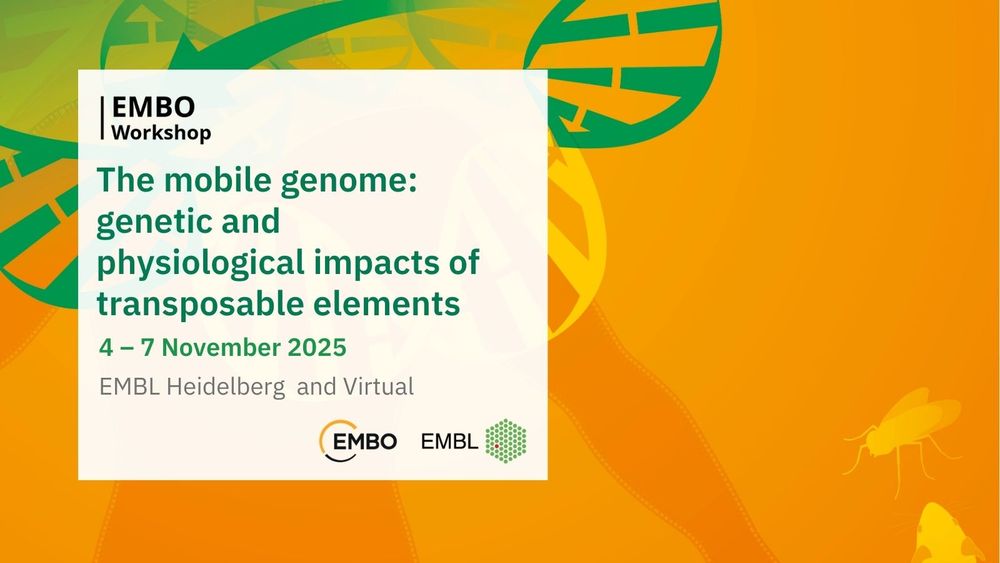
Calling all transposon fans & lovers of genetic innovation
MOBILE GENOME welcomes you in Heidelberg, Nov. 4–7 2025
→ Vibrant & friendly community
→ Cutting-edge talks from mechanisms to physiology
→ Plenty of surprises (TEs never stop innovating)
submit abstract by July 29
Dans cette vidéo, Gaël Cristofari, chercheur ( #UniCA, @cnrs.fr, @inserm.fr) explique de manière claire et illustrée comment ces gènes se déplacent et quel rôle essentiel ils jouent dans notre génétique.
➡️https://youtu.be/twtOhB-TPJk?feature=shared

Dans cette vidéo, Gaël Cristofari, chercheur ( #UniCA, @cnrs.fr, @inserm.fr) explique de manière claire et illustrée comment ces gènes se déplacent et quel rôle essentiel ils jouent dans notre génétique.
➡️https://youtu.be/twtOhB-TPJk?feature=shared
Excited to share my final work from the @soreklab.bsky.social!
We mined phage dark matter using structural features shared by anti-defense proteins (viral tools that help phages bypass bacterial immunity) to guide discovery.
Found 3 new families targeting immune signaling!

Excited to share my final work from the @soreklab.bsky.social!
We mined phage dark matter using structural features shared by anti-defense proteins (viral tools that help phages bypass bacterial immunity) to guide discovery.
Found 3 new families targeting immune signaling!
Thrilled to share our new work now published with Kathy Collins, @nogaleslab.bsky.social @berkeleymcb.bsky.social where we investigate this with #cryoEM & biochemistry in 🧪 and cells! #RNAsky #TEsky
Thrilled to share our new work now published with Kathy Collins, @nogaleslab.bsky.social @berkeleymcb.bsky.social where we investigate this with #cryoEM & biochemistry in 🧪 and cells! #RNAsky #TEsky
A prophage-encoded sRNA limits lytic phage infection in adherent-invasive E. coli.
Huge thanks to members of the Round Lab, @duerkoplab.bsky.social, Wiedenheft Lab, and phage legend Sherwood Casjens.
#microsky 🦠🧫🧪🧬
www.biorxiv.org/content/10.1...

A prophage-encoded sRNA limits lytic phage infection in adherent-invasive E. coli.
Huge thanks to members of the Round Lab, @duerkoplab.bsky.social, Wiedenheft Lab, and phage legend Sherwood Casjens.
#microsky 🦠🧫🧪🧬
www.biorxiv.org/content/10.1...
This is the revised version of our manuscript, which will become the final published version !
This is the revised version of our manuscript, which will become the final published version !
We used #cryoEM to show how a type I-F #CRISPR integrase captures, delivers, and integrates foreign DNA.
www.biorxiv.org/content/10.1...

We used #cryoEM to show how a type I-F #CRISPR integrase captures, delivers, and integrates foreign DNA.
www.biorxiv.org/content/10.1...
Full story here:
www.biorxiv.org/content/10.1...
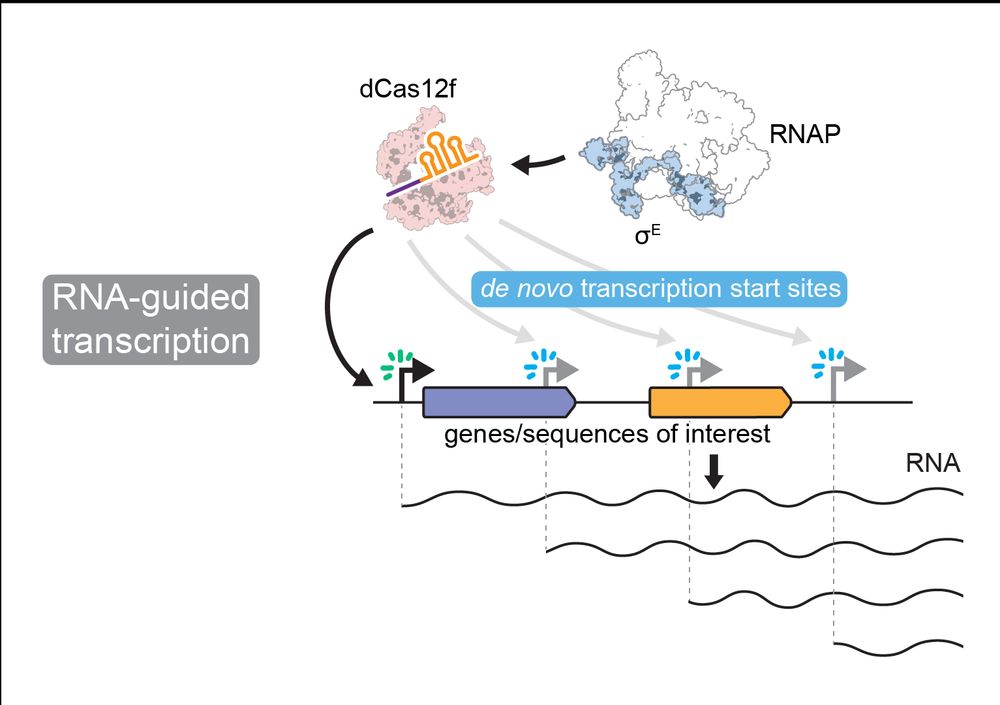
Full story here:
www.biorxiv.org/content/10.1...
@cryptogenomicon.bsky.social is now on bsky:
@cryptogenomicon.bsky.social is now on bsky:
the Liu group we report the development of a laboratory-evolved CRISPR-associated transposase (evoCAST) that supports therapeutically relevant levels of RNA-programmable gene insertion in human cells. drive.google.com/file/d/1I-Ub...
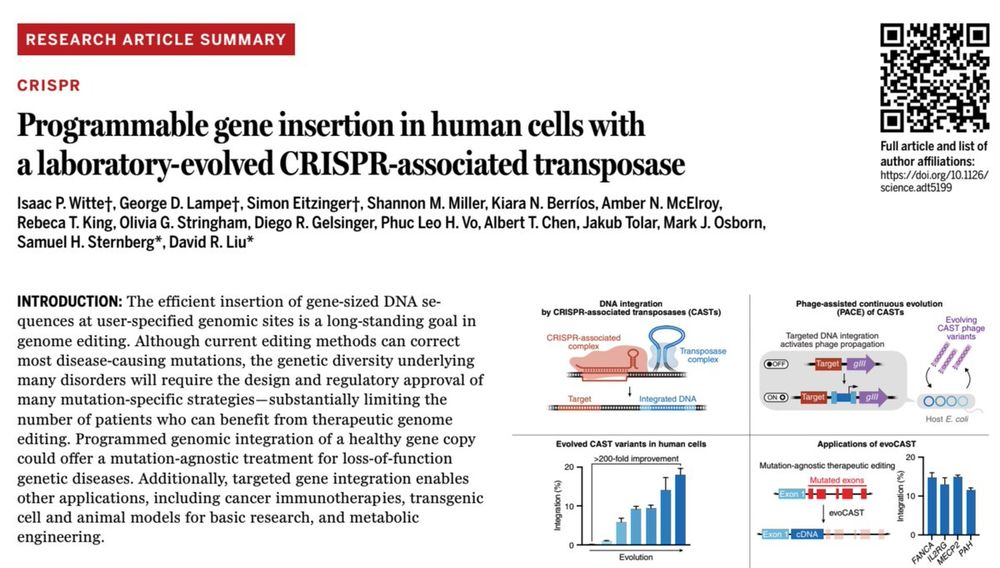
the Liu group we report the development of a laboratory-evolved CRISPR-associated transposase (evoCAST) that supports therapeutically relevant levels of RNA-programmable gene insertion in human cells. drive.google.com/file/d/1I-Ub...
Gag proteins of endogenous retroviruses are required for zebrafish development
www.pnas.org/doi/10.1073/...
Led heroically by Sylvia Chang & @jonowells.bsky.social
A study which has changed the way I think of #transposons! No less! 🧵 1/n
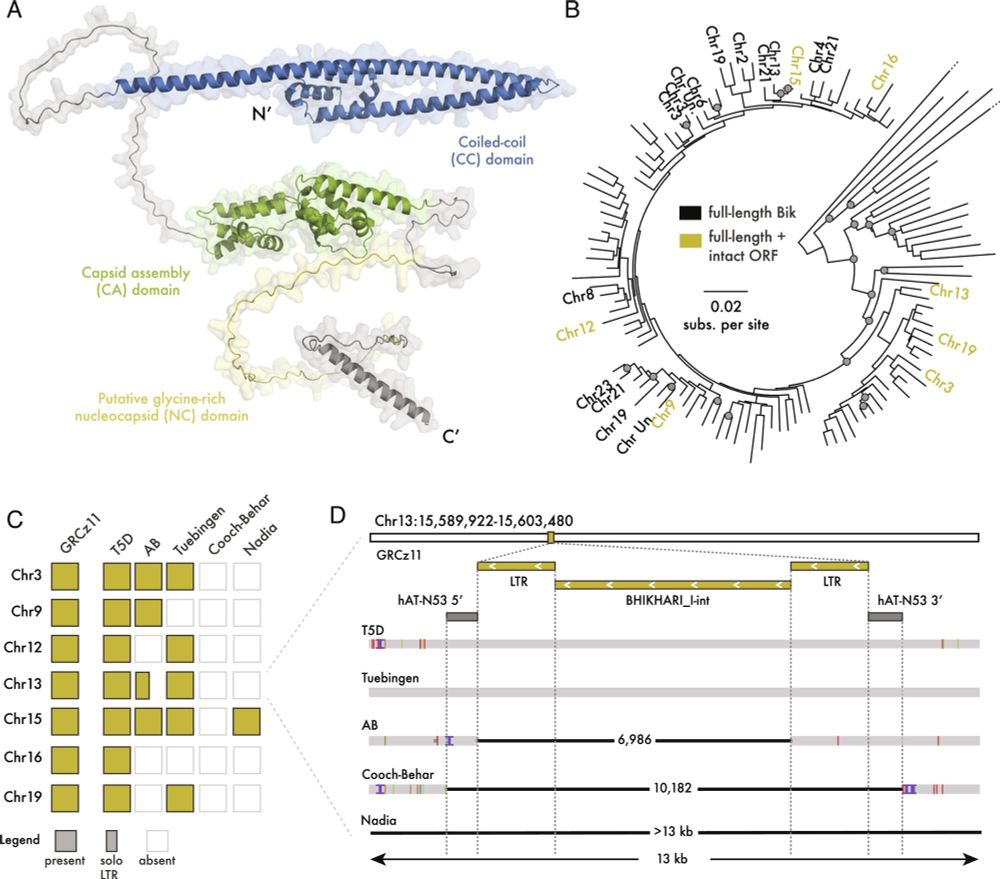
Gag proteins of endogenous retroviruses are required for zebrafish development
www.pnas.org/doi/10.1073/...
Led heroically by Sylvia Chang & @jonowells.bsky.social
A study which has changed the way I think of #transposons! No less! 🧵 1/n
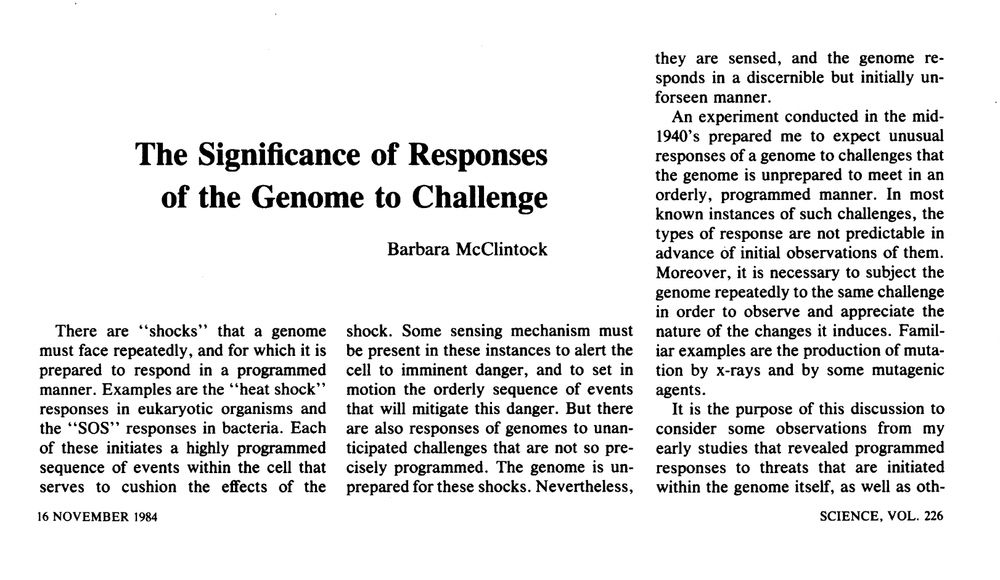
I am really excited that @tamanash.bsky.social’s first paper on the remarkable evolutionary gymnastics of dual-host viruses (even in single codons) is now online.
Follow along here 🧪🧵
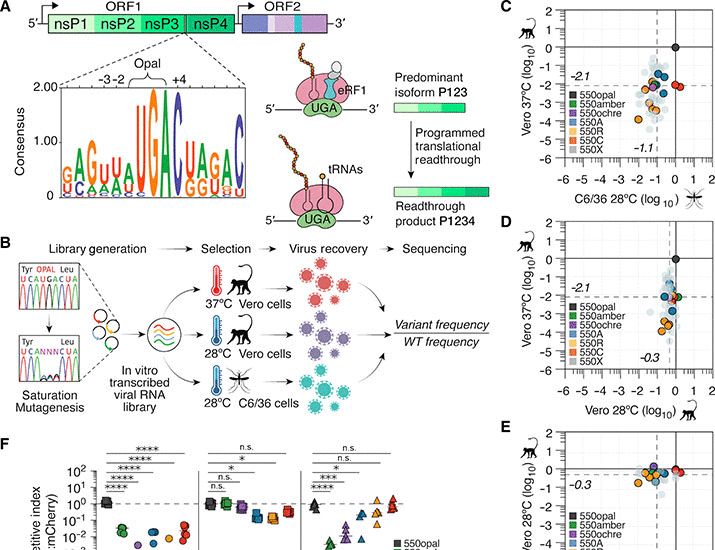
I am really excited that @tamanash.bsky.social’s first paper on the remarkable evolutionary gymnastics of dual-host viruses (even in single codons) is now online.
Follow along here 🧪🧵

We knew that TEs were very pretty active in this global fungal pathogen of wheat.
Now with nearly 2000 Illumina genomes available, we could finally ask questions about historic TE activation waves.


We knew that TEs were very pretty active in this global fungal pathogen of wheat.
Now with nearly 2000 Illumina genomes available, we could finally ask questions about historic TE activation waves.



